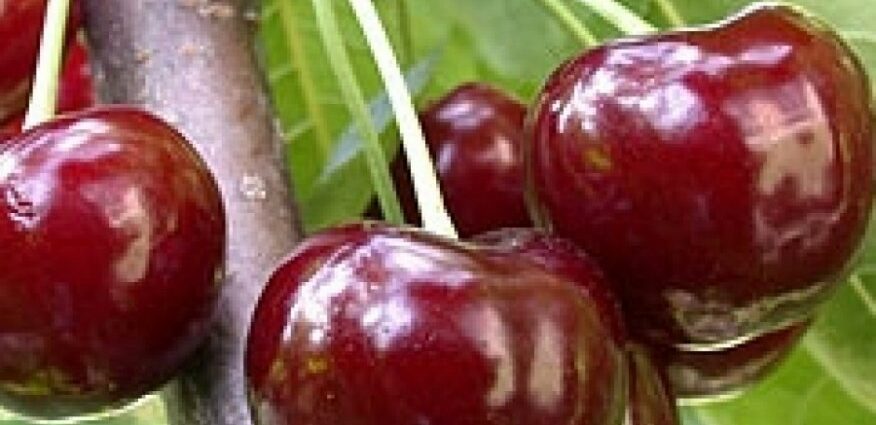Cherry Valery Chkalov: grade
Cherry “Valery Chkalov” was bred for a long time, people also call it Valeria. This is an old variety created jointly by the Michurinsk and Melitopol laboratories. It passed the test at the beginning of the sixties of the last century and only 20 years later became widespread in the North Caucasus region. Nowadays it grows wherever the climate permits.
Cherry of this variety is self-fertile; neighbors-pollinators are needed for good fruiting. For this purpose, the varieties “Skorospelka”, “Aprelka”, “June Early” and others are well suited. Their flowering dates coincide with the flowering period of Valeria.
Cherry “Valery Chkalov” gives a lot of fruits
Cherry variety “Valery Chkalov” has its own characteristic features:
- The trees are tall – 6-7 meters, well leafy, the crown is spreading.
- The variety is very productive. In the southern regions, the maximum yield was recorded: a twelve-year-old plant produced 174 kg of fruits. And on average, the yield of the variety in the south is about 60 kg, in the north – about 30 kg per tree.
- The sweet cherry is very early, at the beginning of June the fruits are already ripe.
- Fruits are large, with a thin skin, dessert taste, sweet, dark red. The stone is large, poorly separated from the pulp.
- The plant tolerates frosts down to -25. At lower temperatures, if left untreated, it freezes and may die.
- The variety is susceptible to diseases, affected by gray rot and coccomycosis.
It is appreciated for its large fruits and early ripening. On the basis of this variety, others were bred that are more perfect and do not get sick.
When growing cherries at home, the following recommendations must be taken into account:
- Trees do not like shade, drafts and open wind. They should be planted in a sunny location, preferably in a garden with other varieties.
- The soil for planting a seedling should not be acidic, too clayey, sandy or marshy. The place must be dry, ash must be added to acidic soil, clay to sandy soil, and sand to clayey soil.
- If severe winters are present, the plant must be covered. Protect trunks from rodents by wrapping. In the spring, a mandatory whitewash is needed.
- At the beginning of March, it is necessary to cut off dried and frozen branches, which are the source of diseases.
The variety is very productive, and during the ripening period it will not be superfluous to tie up the branches so that they do not break.
Cherry trees “Valery Chkalov” do not live very long. Disease susceptibility makes them vulnerable. If the tree is sick, it cannot be cured. You can try to spray with chemicals, but this will only slow down the disease, but the tree will still gradually dry out.










